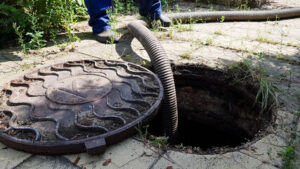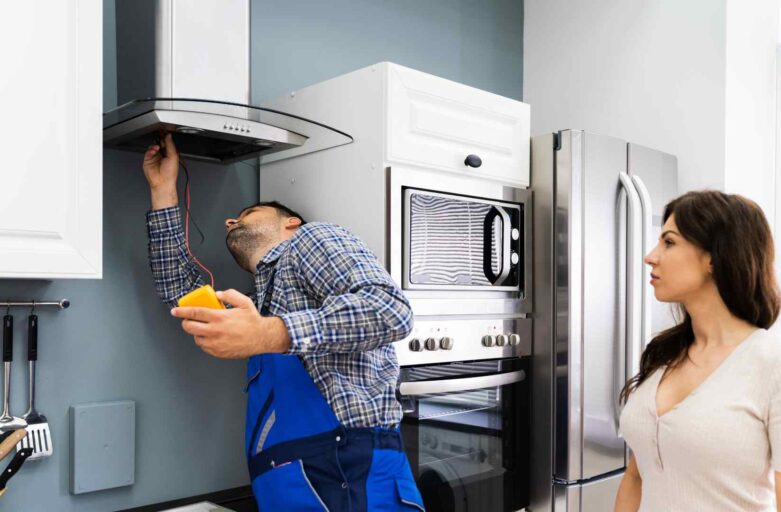Plumbers Aurora CO install and repair systems that provide potable water, hot-water production, sewage, and drainage in residential and commercial settings. They interpret blueprints and building codes to ensure plumbing systems are installed correctly and meet safety regulations.Plumbers Aurora COPlumbers install and repair systems that provide potable water, hot-water production, sewage, and drainage in residential and commercial settings. They interpret blueprints and building codes to ensure plumbing systems are installed correctly and meet safety regulations.
Plumbers also need to have excellent customer service skills to interact with clients, listen to their concerns, and explain complicated issues in simple terms. They may need to work evenings or weekends to address emergency situations.

Plumbers are responsible for installing, repairing and maintaining pipes and plumbing fixtures. They use a wide variety of tools, equipment and supplies to do their work. They also need to have excellent customer service skills, as they often interact with customers on a daily basis. Some plumbers even play a role in educating their customers on preventative maintenance. Other job duties include troubleshooting plumbing problems, reading blueprints, collaborating with other contractors and following industry codes and regulations.
Unlike many other jobs, plumbers are constantly out in the field, meeting new people and forging relationships that can generate income well into the future. As a result, they have a strong sense of camaraderie and teamwork. They are down-to-earth people who treat their coworkers with respect and do not engage in backstabbing or gossip. Moreover, they enjoy helping people in a tangible way. After all, what’s more satisfying than restoring water service to a family whose basement is flooding or fixing a clogged sewer line?
In addition to solving plumbing emergencies, plumbers are responsible for designing plumbing systems for new construction projects and working on municipal water supply and drainage systems. They may also need to test and inspect plumbing fixtures and components. Plumbers can choose to specialize in a certain type of work, such as installing backflow prevention devices or gas pipe lines.
Plumbers can find employment with construction companies, plumbing contractors or maintenance departments in residential and commercial buildings. They can also opt to be self-employed and run their own plumbing business. This offers greater flexibility and independence. However, running your own business comes with more responsibilities, including sourcing materials and handling day-to-day business transactions.
Plumbers are in a unique position to positively impact people’s lives and the environment by ensuring that families have access to clean drinking water and by preventing wastewater from overflowing into streets and homes. As a result, they are a vital part of society. In addition, plumbers are instrumental in preventing deadly diseases caused by dirty water. As a result, it is important that plumbers are treated with the utmost respect and appreciation by their employer. Providing them with practical benefits such as health insurance, paid vacation and mental health days can help to ensure that they stay happy and engaged in their work.
Education and Training Requirements
While a high school diploma is not always required to be a plumber, most states require candidates undergo years of professional training. Typically, vocational classes at an authorized technical college or plumbing school are the first step, teaching fundamentals like drainage systems and water delivery. Once the classroom portion is completed, apprentices must get hands-on experience working on various plumbing projects. Most apprenticeships last several years, starting at an entry-level apprentice position and then moving up to journeyman level status. Upon finishing a formal apprenticeship program, many apprentices choose to become licensed by their state’s Department of Labor or other regulatory agency.
Plumbers must also pass certification exams. This ensures that they have the skills and knowledge needed to work on specific systems, such as sanitary sewers or storm drains. Professional organizations often offer classes and workshops to help plumbers stay up-to-date on industry changes. Additionally, some plumbers may choose to obtain certification in green plumbing solutions. This can help boost their job opportunities as more customers look for ways to lower energy costs and reduce environmental impact.
During the training process, plumbers must complete numerous tasks, such as reading blueprints and interpreting designs or specifications. They must also learn about the laws and regulations that govern their profession, and they must be able to follow safety and hygiene guidelines. Some cities, such as city even require that master plumbers take continuing education courses to maintain their license.
The Path to Pro Training Program helps people figure out what career they want to pursue, find the right mentors and gain real-world experience with paid apprenticeships. It also teaches valuable soft skills, such as punctuality, communication and teamwork, to help you start your career on the right foot.
Work Environment
Plumbers install, maintain, and repair the pipes, fixtures, and appliances that facilitate water, gas, and waste disposal in residential, commercial, and industrial settings. They also inspect plumbing systems to ensure compliance with building codes and regulations. These professionals use a variety of tools and techniques to identify and resolve issues like leaks, clogs, and malfunctioning components. Plumbers may also collaborate with architects and construction teams to ensure plumbing is integrated seamlessly into new construction projects.
The work environment for plumbers varies depending on the type of work they do. Residential plumbers typically work in homes and apartments, installing and repairing plumbing fixtures and appliances such as sinks, toilets, and showers. They also work on larger-scale plumbing systems, such as water supply lines and drainage systems for entire buildings. Commercial and industrial plumbers typically work in office buildings, retail spaces, restaurants, hospitals, and factories, installing and maintaining complex plumbing equipment that serves multiple occupants.
Regardless of the work setting, all plumbers must be comfortable working in tight and confined spaces and around dangerous materials like chemicals and sewage. They also need to be willing to work on-call, responding to plumbing emergencies outside of normal business hours. This can sometimes result in long workdays and overtime.
While the work environment for plumbers can be challenging, it is also rewarding. Plumbers are in high demand and can find jobs in a variety of industries, making this a stable and lucrative career choice. Additionally, plumbers are often able to set their own schedules and choose the projects they work on, allowing them to enjoy more control over their careers.
Finally, plumbers can also choose to become independent contractors and run their own plumbing businesses, which can be incredibly lucrative and rewarding. However, this option requires a lot of dedication and effort to build a successful business. In addition, being self-employed can be stressful if you are not used to working alone and handling customer relations on your own. It is important to weigh these pros and cons before choosing this path.
Salary
The median income for plumbers is $60,090, according to the U.S. Bureau of Labor Statistics. However, this figure can vary significantly based on factors such as location, specialization, and the individual plumber’s experience and qualifications.
Whether you’re a newbie or a veteran in the plumbing industry, there are a few ways that you can increase your salary. These strategies require a bit more work on your part, but they’re worth it in the long run. 1. Invest in additional training. Getting certified in plumbing services can make you more valuable to clients and employers, and it can also help you advance your career. 2. Offer exceptional customer service. A satisfied client is more likely to recommend you and become a repeat customer, which can lead to increased revenue over time. 3. Network and market your skills. By establishing an online presence and utilizing job-management software like ServiceTitan, you can connect with more clients and contractors, which can result in higher pay.
Plumbers are a highly-demand occupation, and the demand is expected to continue growing in the near future. This is due to a combination of factors, including a growing population, construction booms, and the need for plumbers to repair or replace old pipes. This growth makes it a good choice for those looking for a stable and lucrative career.
Another reason to choose a career as a plumber is that it offers a low cost of entry and no student loan debt. Most plumbers train at vocational school or as apprentices assisting licensed plumbers, which allows them to earn while they learn. In addition, many plumbers are members of a union and receive great benefits including health insurance, 401(k), and life insurance.
As a bonus, plumbers get to interact with all kinds of people from different walks of life, which can be fun and interesting. They’re also down-to-earth people who enjoy helping others and don’t mind getting their hands dirty. And, of course, they get to spend their free time doing something they love – fixing things! That’s not a bad thing to be passionate about.







